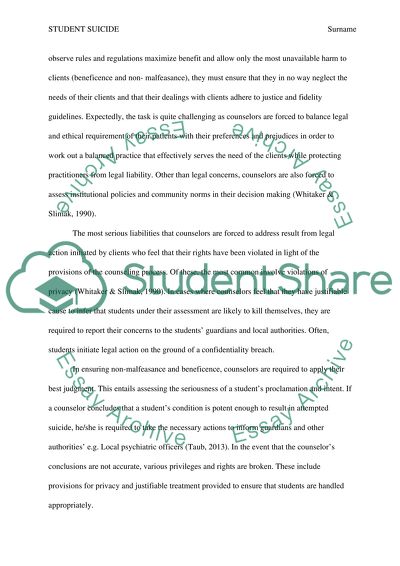Cite this document
(“Student Suicide Assignment Example | Topics and Well Written Essays - 1000 words”, n.d.)
Retrieved from https://studentshare.org/education/1498262-case-analysis
Retrieved from https://studentshare.org/education/1498262-case-analysis
(Student Suicide Assignment Example | Topics and Well Written Essays - 1000 Words)
https://studentshare.org/education/1498262-case-analysis.
https://studentshare.org/education/1498262-case-analysis.
“Student Suicide Assignment Example | Topics and Well Written Essays - 1000 Words”, n.d. https://studentshare.org/education/1498262-case-analysis.


